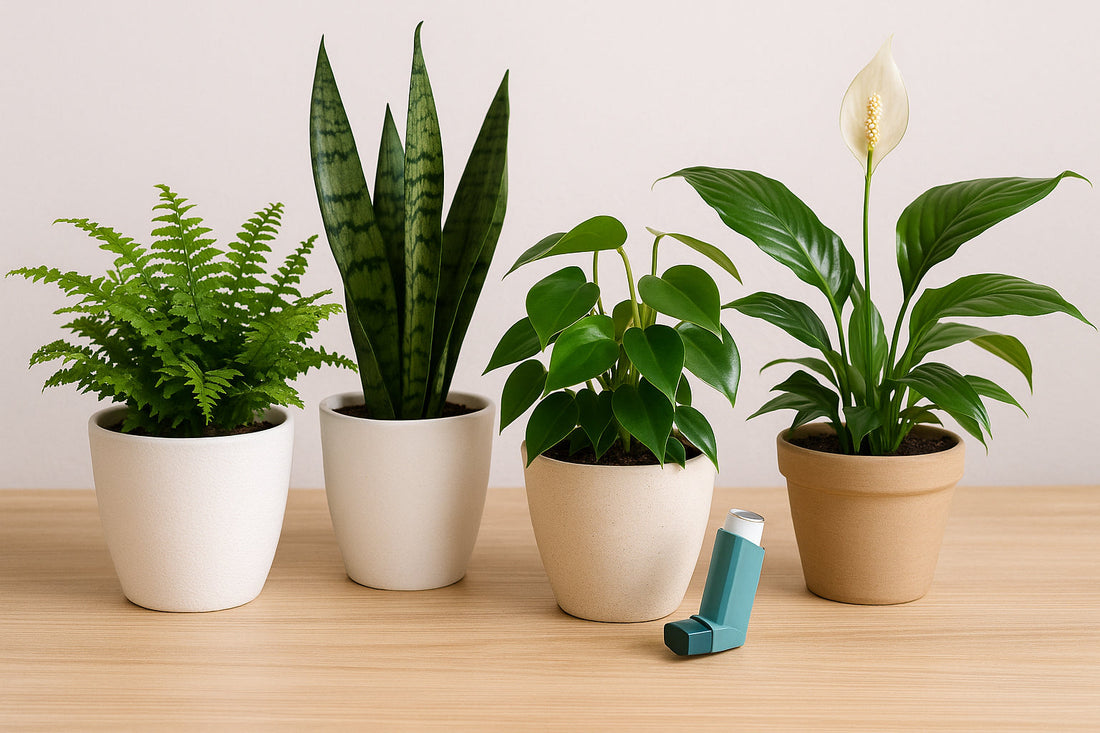
The Lungs vs. the Leaves: Which Houseplants Are Safe for Asthma?
Share
 Let’s face it—plants are the quiet roommates we all want. They don’t judge your late-night snack runs, they thrive on a little neglect, and they look great on Instagram. But if you or someone in your household has asthma, not every plant deserves a spot on the shelf. Some leafy lovelies are lung irritants in disguise.
Let’s face it—plants are the quiet roommates we all want. They don’t judge your late-night snack runs, they thrive on a little neglect, and they look great on Instagram. But if you or someone in your household has asthma, not every plant deserves a spot on the shelf. Some leafy lovelies are lung irritants in disguise.
Before you find yourself wheezing in a jungle of good intentions, let’s break down the asthma-friendly options—and the botanical backstabbers.
🌿 The Lung-Friendly MVPs
These plants not only look great, but they’re also known to purify air without triggering asthma symptoms:
1. Spider Plant (Chlorophytum comosum)
An overachiever in air purification and extremely low-maintenance. Bonus: it’s pet-friendly.
2. Areca Palm (Dypsis lutescens)
A tropical queen that adds humidity to dry air without spewing allergens. Your lungs will thank you.
3. Parlor Palm (Chamaedorea elegans)
Soft, gentle, and less likely to stir up dust. Also great at minding its own business.
4. Peace Lily (Spathiphyllum)
It’s a star air-purifier—just be mindful to keep it out of reach of pets, as it’s mildly toxic if ingested.
5. Bamboo Palm (Chamaedorea seifrizii)
Elegant, low-allergen, and good at removing air pollutants like formaldehyde. A literal breath of fresh air.
6. Pothos (Epipremnum aureum)
While mildly toxic to pets, pothos are low pollen, easy to grow, and don’t stir up much drama—or dander.
⚠️ Proceed with Caution
These plants aren't inherently evil, but they could stir up trouble for sensitive lungs:
✦ Ferns (especially Boston Fern)
They shed spores and can trap mold and dust—lovely to look at, tricky to live with.
✦ Ficus (especially Fiddle Leaf Fig)
Stunning? Yes. Respiratory risk? Also yes. They emit latex and can cause allergic reactions.
✦ Dieffenbachia (Dumb Cane)
Sap can be an irritant, and it’s one of the more toxic houseplants around.
✦ English Ivy
Commonly recommended for air purification, but it can trigger skin and respiratory irritation—especially when it flowers.
✦ Orchids
Beautiful, but their soil can harbor mold spores if kept too moist. Not ideal for asthma-prone homes.
🧼 Quick Tips to Keep the Air Clear
Even with “safe” plants, these habits help keep the air—and your lungs—happy:
- Dust the leaves with a damp cloth every couple of weeks.
- Don’t overwater—damp soil is a mold magnet.
- Avoid decorative moss and scented potting soils.
- Keep plants out of bedrooms if asthma is severe.
- Use pebble trays or LECA instead of organic mulch to reduce mold.
💚 Final Thoughts
With the right plants and a little attention to airflow and care, your home can be both lush and breathable. Think of it as a truce between the lungs and the leaves.
 Got a favorite asthma-friendly plant or a leafy love story to share? Tag us on Instagram @whiskersprig — we’d love to see what’s breathing easy on your windowsill!🌿
Got a favorite asthma-friendly plant or a leafy love story to share? Tag us on Instagram @whiskersprig — we’d love to see what’s breathing easy on your windowsill!🌿
